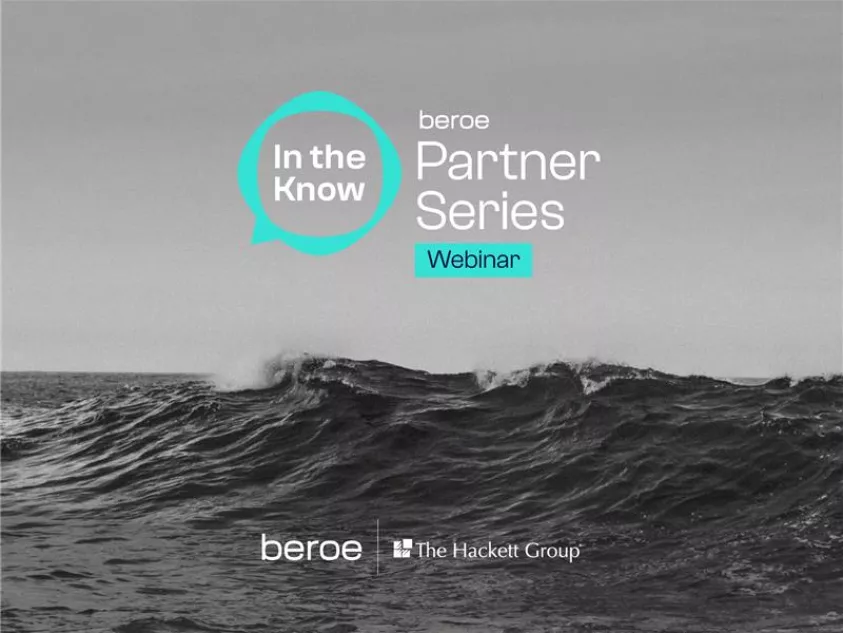Webinar
Procurement in flux: How strategic priorities are shifting amid market volatility

Procurement in flux: How strategic priorities are shifting amid market volatility
Four key takeaways from the recent Beroe In the Know: Partner Series webinar looking at the impact a turbulent H1 2025 has had on strategic priorities
As we enter the second half of 2025, procurement leaders are facing a landscape that looks markedly different from the one they may have planned for. Ongoing conversations and negotiations around tariffs, inflationary pressures, and geopolitical instability have reshaped expectations and forced strategic rethinking from organizations across all verticals.
This provided an ideal topic for Beroe’s first In the Know: Partner Series webinar, inviting Chris Sawchuk, Principal at The Hackett Group, to present the findings of a recent mid-year poll of procurement leaders. Beroe’s Chief Content Officer, Valekumar Krishnan, introduced the webinar and provided context around Beroe’s strategic partnership with The Hackett Group, aimed at enhancing procurement insights for global organizations.
Krishnan discussed how the partnership includes integrating Beroe’s AI-driven procurement intelligence with The Hackett Group’s world-class research and benchmarking data to enable procurement professionals to make faster, more informed decisions with deeper real time visibility.
The webinar “A Turbulent H1 for Procurement: What’s the Impact on Strategic Priorities?”, revealed how businesses are recalibrating strategies to stay resilient, relevant, and results-driven in an economic climate which, as Sawchuk noted, is increasingly being characterized by the term VUCA – Volatility, Uncertainty, Complexity, and Ambiguity.
- A first-ever mid-year pulse poll – why now?
The Hackett Group’s annual procurement study has been a fixture for nearly two decades, with organizations responding every November with their thoughts and expectations for the year ahead. 2025 is the first time a mid-year pulse has been conducted, directly in response to the rapidly shifting business environment.
The poll itself focused on three key questions:
- Have savings expectations changed?
- Are strategic priorities being redefined?
- Where are organizations investing to meet these priorities?
The response data revealed that, while procurement teams are still projecting higher levels of savings in 2025 compared to 2024, optimism around savings delivery has declined, with 37% of organizations now expecting to exceed their 2024 savings, down from 48% when the original research was conducted.
A live poll of webinar attendees mirrored these concerns, with 37% identifying cost and tariff impact management as being a top priority heading into the second half of the year.
- Cost still dominates, but value creation is rising
While cost reduction remains a top strategic priority, procurement is increasingly being seen as a strategic enabler and value driver, rather than just a cost center. A poll during the webinar revealed a growing emphasis on strategic value creation, supply resilience and risk mitigation, agility and operating model transformation, and AI adoption and digital transformation. As Sawchuk observed, when talking with procurement leaders: “Today, the typical response to the question ‘What are your priorities?’ is ‘All of them’.”
- Investment focus – AI takes center stage
When it comes to capability-building, the biggest shift has been in the emergence and utilization of AI solutions, which has risen from the 8th to the 2nd most important consideration in planned initiatives. While maturity is still low, organizations see AI as a critical capability moving forward.
Polled on their transformation initiative priorities for the rest of the year, webinar attendees highlighted agile and guided category management, and strategic supplier collaboration – both of which are areas where AI has made significant inroads.
- Procurement’s new mandate – competitive advantage
One of the most striking shifts revealed alongside the emergence of AI has been the elevation of procurement’s role in creating competitive differentiation. As Sawchuk observed, “It’s not just about acquiring intelligence, it’s about acting on it quickly. That speed is what creates advantage.” This shift has been driven both by enterprise expectations, and the capabilities unlocked by AI and market intelligence platforms. Procurement is no longer just about savings – it’s about strategic impact.
Procurement leaders must embrace transformation, invest in talent, and act on intelligence fast. Those who do will be best positioned to turn volatility into opportunity.